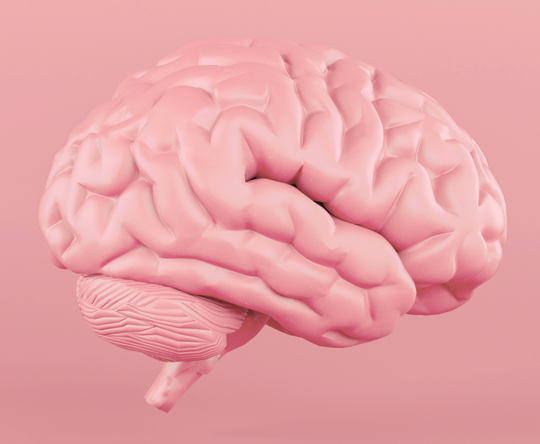The eyes are a window to the soul and into the body, problems such as dry eye, blurred vision or mild redness of the eyes should not be ignored
The World Health Organization estimates that out of the 2.2 billion people suffering from eye diseases worldwide, for at least a billion of them the disease could have been prevented. Thanks to the eyes, it is possible to detect some other diseases because they reveal symptoms of diabetes, high blood pressure or rheumatic diseases. Apart from aging and genetic predispositions, eye health is influenced by many other factors we have control over ourselves, thus preventing disease and improving our health. This is why ophthalmologists, neurologists, endocrinologists, psychiatrists, rheumatologists, otorhinolaryngologists, plastic surgeons, general practitioners, pharmacists and engineers are brought together at X-Lab — the expert research hub by JGL — to analyse the latest research and, by applying a holistic approach, to share with us how to take care of our eye health and why that is important for our whole bodies.
The eye muscles can work day and night without rest and, along with the heart, are the fastest and most loaded muscles in the body. It is estimated that our eye will register an average of 24 million photos over a lifetime and blink approximately 5.2 million times each year. We receive as much as 90 percent of information from our environment through our eyes. And what about the connection between the eyes and the bones, can the eyes reveal rheumatic difficulties? For X-Lab by JGL, this is exactly what Šime Mijić, MD, Croatian physiatrist and rheumatologist and member of the American College of Rheumatology, will reveal.
1 Can eye symptoms be associated with rheumatic diseases?
The body is a whole — the symptoms and signs on any organ can indicate a disease in another organ or organ system, and in the same manner the eyes can reveal or help reveal some bone diseases. Rheumatic diseases can affect the ocular structures as well. Sometimes this effect is so characteristic it makes the diagnostics of the disease itself easier. When they are not a result of allergies, irritations or viral and bacterial infections, symptoms such as dry eye, redness, vision difficulties, and eye soreness may be associated with bone and joint diseases.
Some of the most common inflammatory rheumatic diseases are associated with eye diseases. If specific ocular structures — namely the sclera, conjunctiva, episclera and uvea — are affected, this could indicate certain inflammatory rheumatic diseases. For example, rheumatoid arthritis is associated with inflammation of the sclera and episclera, ankylosing spondylitis, the most common inflammatory disease of the spine, is associated with parts of the eye called the uvea, and vasculitis, inflammation of the blood vessels, is associated with the vascular structures of the eye.
By actively searching for these signs when obtaining medical history, as well as through targeted diagnostic tests, we can detect and prevent complications in time.
2 Why is it necessary to maintain eye health?
It is important to highlight that symptoms and signs on the eyes should not be ignored. For example, dry eyes may indicate rheumatoid arthritis or Sjögren’s syndrome. Rheumatoid arthritis is primarily a systemic inflammation of the joints, but it can affect other organs as well. Sjögren’s syndrome is a condition associated with a number of other inflammatory rheumatic diseases, and its main symptom is dryness of the mucous membranes, which includes the normally wet anterior part of the eye. Aside from the eye, other mucous membranes can be affected in a number of diseases. This includes the mucous membranes of the mouth and the reproductive system, as well as the glands connected to the mucous membranes, which can also indicate rheumatic diseases. In Sjögren’s syndrome there is a high incidence of malignant disease, lymphoma and tumours, so regular monitoring by a rheumatologist is necessary in order to consult other medical specialists in time.
3 What else can symptoms such as redness and blurred vision mean?
These symptoms could point to another group of diseases, ones that affect the iris structures and manifest themselves with redness, soreness and blurred vision. This group of diseases affects the spine and the joints, and in rheumatology it is known as spondyloarthritis. Spondyloarthritis is characterized by diseases of the spine and the joints, and the group includes ankylosing spondylitis, psoriatic arthritis, reactive arthritis and others. These diseases are associated with the ocular structure called the uvea, which, to put it simply, is the area around the iris. The connection with the inflammation of precisely these structures of the eye is significant, and even this small piece of information indicates the possible presence of some of the diseases in this spectrum to the specialist rheumatologist or ophthalmologist.
4 How should we take care of our health?
Do not ignore problems with dry eyes, blurred vision, or even mild redness of the eye — they can indicate systemic rheumatic and autoimmune diseases. Redness of a certain area of the eye and the distribution of that redness is important information for the rheumatologist and ophthalmologist because it helps diagnose diseases. The relationship between eye problems and the skin, digestive, genitourinary system and infectious diseases or other organs and parts of the body facilitates the diagnosis, treatment and prevention of a number of diseases.
Systemic manifestations of rheumatic diseases and the interconnection of intestinal, skin and infectious diseases on the eyes are sometimes not so obvious because they do not occur in a time continuum. Even a time delay of several years in symptoms could be associating in rheumatology and ophthalmology. Such symptoms and signs do not have to happen at the same time, so a rheumatologist will often ask the patient about past symptoms such as eye dryness, soreness and burning sensations. They will also ask about the need for frequent eye drop use and the changes in eyesight and vision field in order to make a connection between eye problems and rheumatic diseases and set diagnosis and perform treatment in time.
Because rheumatic diseases and their treatment are associated with eye diseases, targeted medical history and targeted examinations prevent complications and permanent damage. In rheumatology, the saying “the eyes are the window to the soul” is expanded with “and into the bodies.” Sometimes even seemingly small symptoms and signs can help an experienced rheumatologist detect a range of diseases in seemingly unrelated parts of the body.
Therefore, I recommend:
- Always leave the health of the eyes and the musculoskeletal system to specialists.
- React early — seek advice and help when you notice symptoms in the eyes.
- Protect your joints and your eyes.
- Remember that dry eyes can indicate inflammatory rheumatic diseases
QUIZ
SUFFERING FROM DRY EYE SYNDROME? ANSWER THESE QUESTIONS AND FIND OUT HOW TO PREVENT IT AND WHAT TO DO WHEN YOU ARE ALREADY FEELING THE SYMPTOMS
QUIZ





